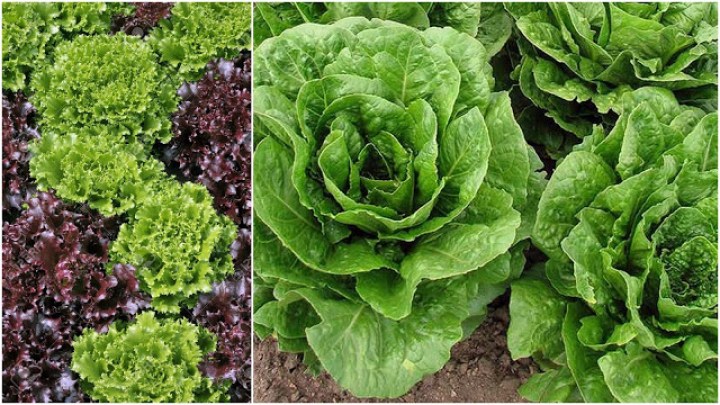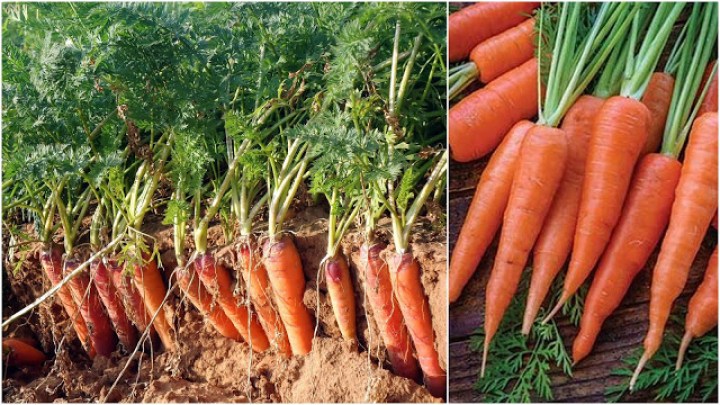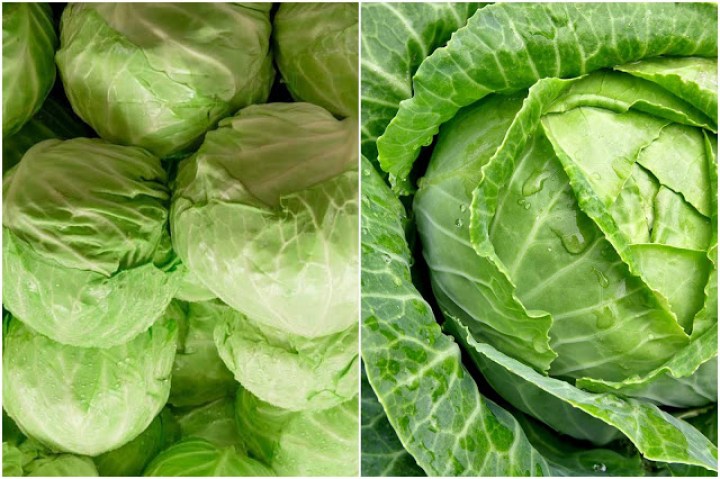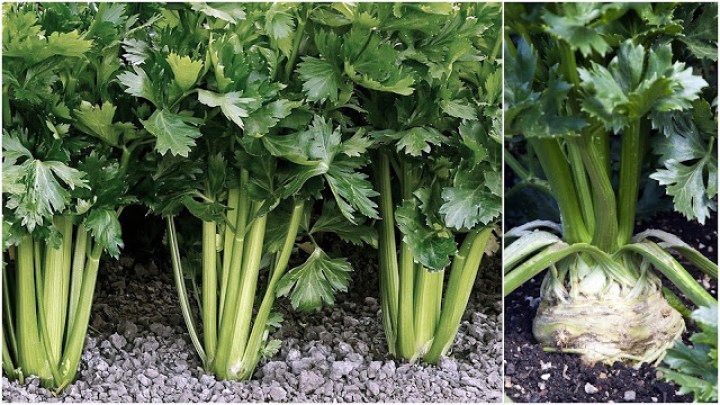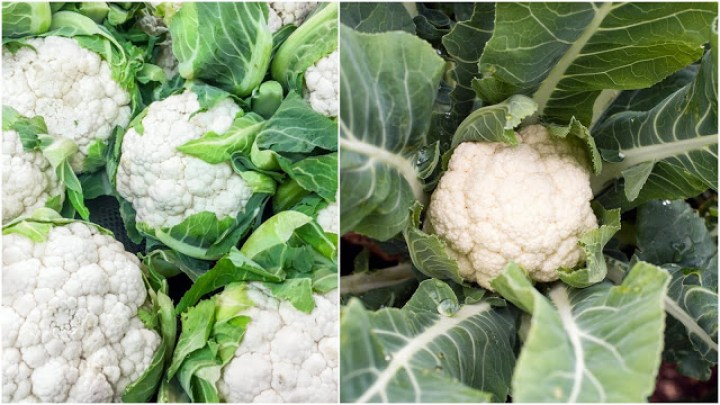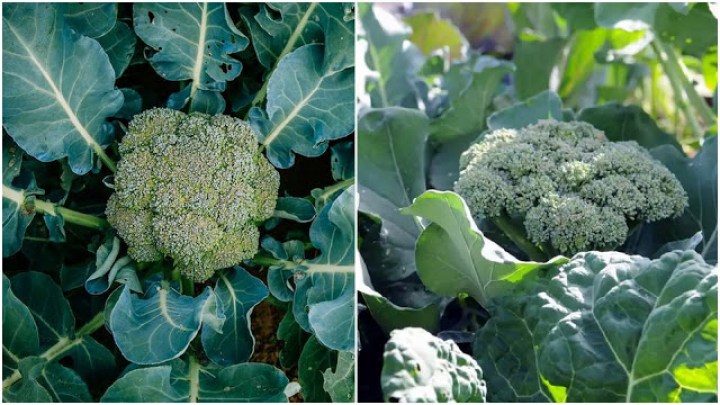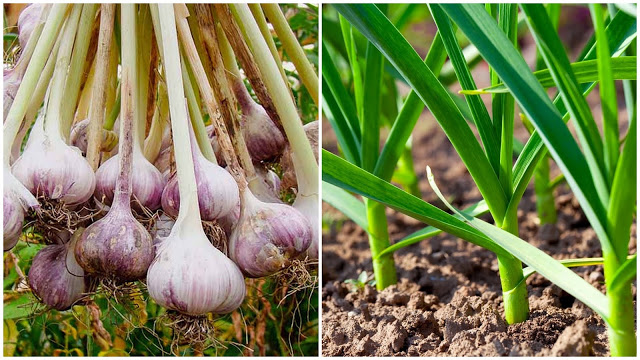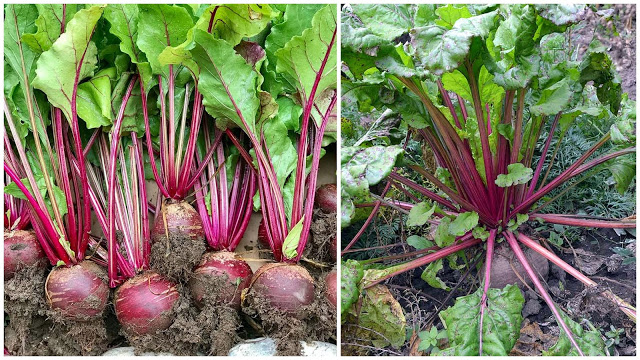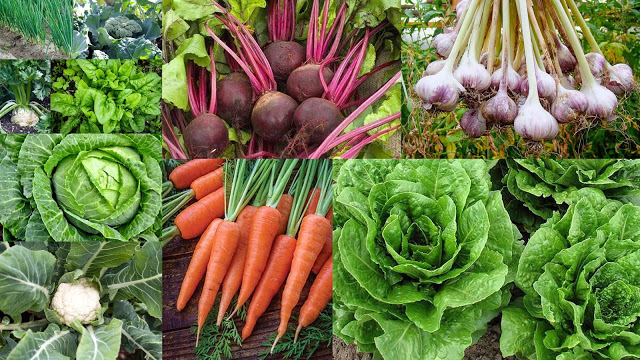
9 Easy to grow winter Vegetables for vegetable garden or pots
Popular and highly nutritious winter vegetables that can be easily grown in a vegetable garden and planting containers. All species, depending on your available space and the amount you need from each one, can be grown in mixed co-cultivations of many species, while especially for amateur …. producers the cultivation of ready-made small plants that you will find in nurseries is more appropriate, easy and fast than planting seeds.
How to grow the most beautiful and delicious fruits and vegetables in hanging baskets
Lettuce
One of the most common and easy autumn-winter salads, although lettuce is now grown in all seasons.
Without special requirements in care, it thrives in a vegetable garden but also in large planters.
The ideal time to plant sprouted ready-made lettuces, which you will find in almost all nurseries from October to November, is when the temperature is 15-18 ° C.
They are planted at a distance of about 30cm from each other and 50-60cm between the planting rows.
Watering with small amounts of water but very regularly so that the soil is permanently kept slightly moist and has very good drainage and protection from intense sunlight are the only needs of plants to give you fruit in 2.5 – 4 months, depending with variety.
Lettuce varieties such as Lola, Iceberg, Salad, etc. can be mixed in the same crop.
Both the necessary mixing of the soil with well-digested manure before planting and the strengthening of each plant with 1-2 spoons of manure or an organic fertilizer based on organic nitrogen once a month, help significantly in the growth of plants and their faster fruiting .
Carrot
One of the most popular and nutritious vegetables that can be grown not only in the vegetable garden but also in pots – planters and even on our balcony.
The edible part of the Carrot grows underground, which is why it is important to enrich the soil well before planting with manure or compost.
The carrot does not like the heat in general, while on the contrary it is very resistant to the cold of winter. For its growth, the plants need to be in a position with several hours of sunshine during the day, while watering should be done 2-3 times a week, depending of course on the weather conditions. .
Ready-made small plants can be planted in planting pots with a depth of 40-50cm and at a distance of about 10cm.
Harvest time is 3-4 months from planting and when the top of the orange-reddish root of the carrot will start to protrude from the ground about 3-5cm.
Cabbage
High nutritional value and one of the most widely consumed winter vegetables both raw in salads and as an ingredient in foods such as the adored … cabbage stuffing
Due to the large size of the plant when the fruit reaches its final size it is not so suitable for cultivation in planting containers, without of course such a thing being prohibitive.
It is planted from the end of summer to November at a distance of more than 50cm between the plants and more than one meter for the planting rows, for cultivation in a vegetable garden.
It needs enough moisture and watering 2-3 times a week during the autumn, depending of course on the conditions of temperature and rainfall, and the soil should have very good drainage to avoid rotting of surface roots.
It grows in sunny places, while the mixing of the soil before planting with manure or compost and the fertilization with a biological preparation that will contain potassium, nitrogen and trace elements every 3-4 weeks are important factors for a successful and efficient cultivation.
Depending on the variety, the harvest takes place 2-4 months after planting, when the head reaches its final size and is quite compact when pressed.
Celery
Grow easily, even in pots – planters on your balcony, one of the most popular herbs of Mediterranean cuisine.
Both the classic variety of Celery, as well as Celery and Celery Root are planted in the fall and before the intense winter cold or early spring.
The small ready-made plants should be placed at a distance of 25-25cm between them and in a garden soil enriched with manure or compost.
Celery grows ideally in sunny or slightly semi-shady places and needs regular watering, so that its soil is kept almost permanently slightly moist.
The harvest takes place 3-4 months after planting, when its shoots have reached a sufficient height.
Cauliflower
Indispensable nutritional value vegetable and if you have the right space it is not at all difficult to secure even the entire amount of Cauliflower that you will consume during the winter.
The edible part is essentially the flower head of the plant that grows in the center of the foliage and is ready for harvest 3-4 months after planting, depending on the variety, when the Cauliflower exceeds 10cm in diameter.
The planting of ready small plants is done from the end of summer until November, in sunny places and in soil enriched with manure or compost and organic fertilizer.
Due to their large lateral growth, the plants should be placed at a distance of at least 50cm from each other.
Cauliflower needs regular watering, 2-3 times a week, depending on the weather conditions, while in conditions of very low temperatures or frost the flower heads that are not yet ready for harvest should be protected with the special antifreeze gardening fabric.
Broccoli
Rich in vitamin C, fiber, calcium, potassium and especially known for its anti-cancer properties, Broccoli is also one of the easy-to-grow winter vegetables, without special needs for care.
The process of growing it is identical to that of Cauliflower, with the difference that each plant has more than one and smaller flower heads, while you can wonderfully plant them in co-cultivation with cauliflower, both in the vegetable garden and in deep and large planting pots.
Onion
Probably the most common type of vegetable with daily use in the kitchen and very easy to grow your own dried or fresh onions in a vegetable garden or pots – planters.
Kokkari, small onion bulbs, you will find almost all seasons in nurseries.
For the harvest of fresh green shoots you can plant at any time while for the cultivation of dried onions the planting of the bulbs should be done in the beginning of spring.
The bulbs are planted at a distance of 5-10 cm from each other (shorter distance for harvesting fresh and longer for dry) and at a depth not exceeding 1cm.
Like all vegetables whose part of the edible fruit grows underground, the onion requires nutrient-rich soil, enriched with manure or compost.
In addition to the initial planting period when watering should be sparse so as not to rot the onion, Onion needs regular watering 2-3 times a week, depending on the prevailing weather conditions, so that the soil is permanent and deep enough. retains a certain amount of moisture.
Fresh onions are harvested 1-2 months after planting, when the thin green shoots reach a sufficient length, while the dried onions are harvested in early summer when the green part of the plant begins to dry and lean towards the ground. At this stage we stop watering and when the aboveground part of the plant is completely dry we collect the bulbs.
Garlic
The plant “medicine” according to many, although due to its smell has sworn … enemies 🙂 and one of the most common herbs for use in the kitchen both raw and as an ingredient in all foods.
Its cultivation is just as easy and similar to that of Onion and with satisfactory yield it can be carried out in planting containers. For its cultivation we plant garlic leaves (preferably those on the outside of the garlic) at a depth of 2-3cm, October-November when the temperatures are around 15-18 ° C
Unlike onions, Garlic is drought resistant and does not need watering more than 1-2 times a week. Shortly before harvest, during the spring, watering for at least 2 weeks should be stopped so that the underground heads of the plant mature and dry sufficiently.
Beetroot
Particularly nutritious are the foliage and mainly the bulbous roots of Beetroot and one of the most delicious winter vegetables offered for cultivation in deep planting containers.
Use for the cultivation of the garden soil enriched with well-dung manure or compost and plant ready-made beetroot plants at a distance of 20-30cm between March-May and from the end of summer to November.
Beetroot does not need much water, watering 1-2 times a week for periods without rainfall is enough while the soil should have very good drainage so as not to stagnate irrigation water at the roots of the plant.
It is cultivated in sunny and semi-shady places, but with lower crop yield and the harvest is done 2-3 months after planting, when the reddish root has reached a satisfactory size of about 5cm in diameter.

